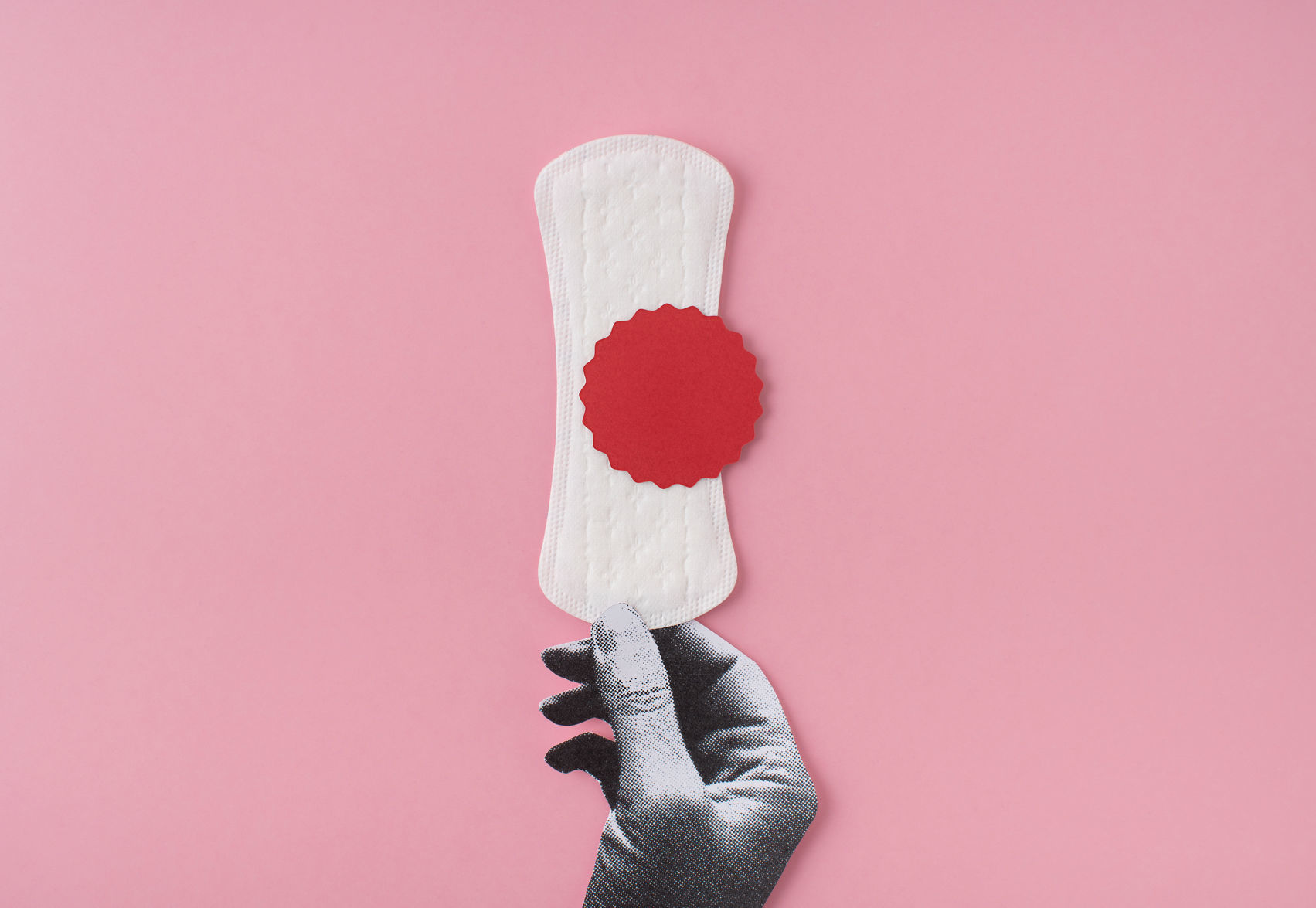Have you ever wondered why you get cramps, crabby, or dark brown blood with your period? Most of us never got the full story of what our periods are really supposed to be like.
A period should be like a finely tuned orchestra. Maybe a little warm-up for about an hour with a bit of pink spotting and very mild cramping, to let you know it’s on its way. After that, your blood should be a pinky red or cherry red (not burgundy or brown). You should have a nice full flow of about 3 to 4 pads, (organic) tampons, or diva cup, changes per day. You should not be passing clots. After 3 to 6 days, your period should slow down and simply end without any brown blood.
If this is not your normal experience don’t worry – you’re not alone and you can tune up your periods. You may have been told you have a tilted or misplaced uterus or cervix, that your uterus is retroverted or anteverted, or it’s simply misaligned. They all mean the same thing, your uterus and cervix are out of place in your pelvis. You may wonder why or how this happens. Most likely this migration started at a very young age. We hardly ever think about the falls, accidents, and extreme amounts of exercise we had as children. The countless hours we spent playing and the normal bumps and bruises we have long since forgotten can play a role. This also includes very active people who run or play high impact sports, as well as anyone who has had pelvic surgeries.
The effects of those impacts still remain in the form of scar tissue (especially to the sacrum), adhesions, emotional trauma, but most importantly, they can cause the over-stretching of the uterine ligaments. When the uterus loses its support, like the elastic in your pants, it wanders. It can fall forward on the bladder causing frequent urination like when we awaken in the middle of the night to urinate, or the tee-hee pee-pee’s when you laugh, cough or sneeze. The uterus can also have a retroversion laying on the large intestine causing constipation. The uterus can migrate to the right or left side, blocking the fallopian tubes and impeding the ovaries’ functioning. In the worst-case scenario the uterus can actually prolapse out of the vaginal canal which only happens in very long term conditions, complications of delivery, or other rare accidents.
The uterus has the amazing ability to go from 4 to 6 ounces after your period all the way to 7 to 8 ounces just before your menstruation. Imagine a lemon sitting on a blood vessel that transports nutrition and is the diameter of a strand of hair. Talk about restrictive! Unlike the ligaments in your knee or shoulder, these ligaments have a lot of contractile (muscle tissue). This allows the uterus to go from 4 ounces to 15 pounds or more when you’re pregnant, and then, shrink back to 4 ounces. This can happen multiple times with each pregnancy.
Ever wonder why you get cramping with your period? One of the main reasons is Anatomy 101. When your uterus is in place at the end of the cycle, the cervix opens and the lining sloughs off with gravity. When the uterus and cervix shift, the lining has to first go up against gravity and then out. This creates muscle contractions (cramps) to move the lining out. When you get brown blood at the beginning of the period it means that the last few periods did not fully evacuate, if there is brown blood at the end of the cycle it means it is a chronic problem. When the uterus is brought back into alignment painful periods and brown blood, along with stop-start periods just magically go away.
In other countries, uterine health awareness is passed down by family or other people in the community. They use therapies like: vaginal steams, nutritive teas, massage, and faja’s (belly bands, not Spanx). They are also educated in the rhythmic cycles of their bodies and nature. They learn when to be more restorative or more active, and how to be observant of changes in their menstrual flow. Our bodies are meant to follow the cycles of the moon. The first half, called the follicular phase, is the time of the new moon; this is the time for more physical activity. It is also our creative time. The second half, known as the luteal phase, is a more inward time. Our hormones are at their peak and we draw our energy inward to prepare for conception.
So….What can you do to change your periods?
- Learn about reproductive health bodywork, where we can teach you at-home massages.
- Get acupuncture and try supportive Chinese herbs, prescribed to you and tailored to your unique case.
- Find alternatives for high impact aerobic exercise until your uterus is in optimal placement
- Breathe into your belly more
- Try more restorative exercise like Tai Chi, Chi Gong, Yoga, or walks in nature for more oxygen






